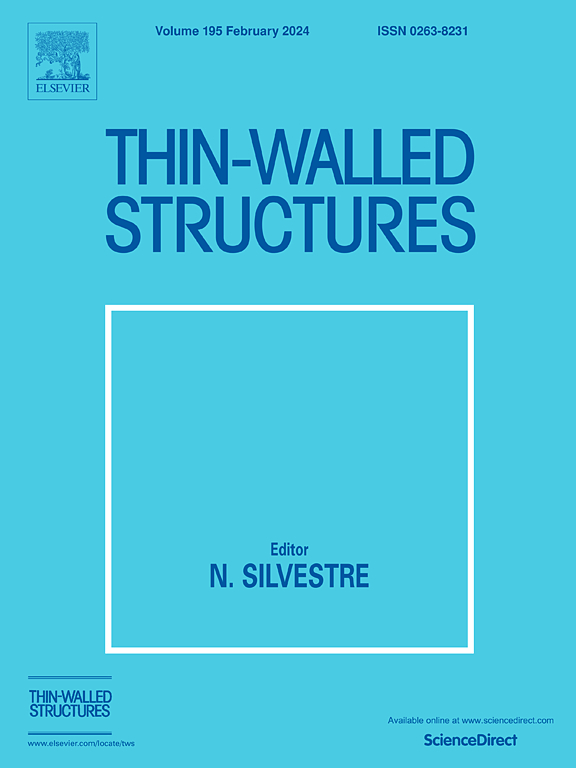Novel test designs for assessing the shear fracture forming limit in thin-walled tubes
IF 5.7
1区 工程技术
Q1 ENGINEERING, CIVIL
引用次数: 0
Abstract
Thin-walled tubes are used for the manufacturing of essential components in several industries. Indeed, the characterization of their formability and failure is vital for tool design, product quality and safety. In the recent years, the number of procedures and test designs for characterizing tubes in forming has experienced a significant development. This progress has been achieved in combination with the use of digital image correlation techniques and finite element analysis, making use of different plastic anisotropy criteria. Nevertheless, most of those tests are aimed at the assessment of failure in mode I of fracture mechanics, being the analysis of fracture under in-plane shear, i.e. mode II of fracture mechanics, reduced to a very limited number of research works based in the adaptation of the corresponding sheet metal forming tests inducing shear. To this regard, this work presents two new procedures based on the specific thin-walled tube geometry for characterizing formability in-plane shear and failure in mode II of fracture mechanics, addressing the absence of specific experimental methods for evaluating the shear fracture forming limit (SFFL) for tubes. The results, based on a combined numerical modelling and experimental analysis of the proposed tests, show that the SFFL can be accurately evaluated by controlling a set of geometrical parameters in the specimens designed to generate shear in tubes by applying either tensile or compressive forces. These proposed tests provide a valuable tool for characterizing the SFFL of thin-walled tubes.
求助全文
约1分钟内获得全文
求助全文
来源期刊

Thin-Walled Structures
工程技术-工程:土木
CiteScore
9.60
自引率
20.30%
发文量
801
审稿时长
66 days
期刊介绍:
Thin-walled structures comprises an important and growing proportion of engineering construction with areas of application becoming increasingly diverse, ranging from aircraft, bridges, ships and oil rigs to storage vessels, industrial buildings and warehouses.
Many factors, including cost and weight economy, new materials and processes and the growth of powerful methods of analysis have contributed to this growth, and led to the need for a journal which concentrates specifically on structures in which problems arise due to the thinness of the walls. This field includes cold– formed sections, plate and shell structures, reinforced plastics structures and aluminium structures, and is of importance in many branches of engineering.
The primary criterion for consideration of papers in Thin–Walled Structures is that they must be concerned with thin–walled structures or the basic problems inherent in thin–walled structures. Provided this criterion is satisfied no restriction is placed on the type of construction, material or field of application. Papers on theory, experiment, design, etc., are published and it is expected that many papers will contain aspects of all three.
 求助内容:
求助内容: 应助结果提醒方式:
应助结果提醒方式:


